1998 INTERVIEW: Jim Jarmusch on Film "Year Of The Horse" w/ Neil Young and Crazy Horse

Director Jim Jarmusch’s intimate documentary about Neil Young and Crazy Horse, Year Of The Horse spanned the band’s 28-year history, incorporating footage from tours in 1976, '86 and their most recent '96 jaunt around America and Europe.
The Akron, Ohio-born Jarmusch, one of the pioneers of the American independent film boom, is best known for his idiosyncratic movies Stranger Than Paradise, Down By Law and Mystery Train. Music is a big element in all his films, and Jarmusch has cast rock music personalities in his movies like Screamin’ Jay Hawkins and Tom Waits.
The director's relationship with Young began when the rocker did the score for his last film, Dead Man, while Neil's own label, Vapor, released the soundtrack album. Jarmusch also directed the video for the song “Big Time” from the Neil Young and Crazy Horse record “Broken Arrow.”
Year Of The Horse is about the band, Neil Young and Crazy Horse--which includes longtime cohorts drummer/vocalist Ralph Molina, bassist/vocalist Billy Talbot and guitarist/vocalist Frank “Poncho” Sampedro.
Former Neil Young and Crazy Horse producer/arranger Jack Nitzsche is represented in some still photos in the collection as well as a Crazy Horse founding member, Danny Whitten.
The live performances, along with the interviews and behind-the-scenes footage, were filmed in Europe and the US during the '96 tour, with some archival stuff from both the ’76 and ’86 treks. Most of the performances were photographed in 16mm, but a large percentage was captured on Super-8 film by L.A. Johnson and Jarmusch.
“But mostly we used Super-8 because we love the way it looks—the raw beauty of the material somehow corresponds to the particular quality of the Horse’s music.”
In 1998 Harvey Kubernik interviewed director Jim Jarmusch in Los Angeles. Portions were later published in Kubernik's 2006 book Hollywood Shack Job: Rock Music in Film and on Your Screen.

Q: How did your relationship with Neil Young formally begin?
Jim Jarmusch: Neil and the band liked the results of the video I did for the song, “Big Time,” which was shot entirely on Super-8 film in and around Half Moon Bay, California. Neil particularly liked the rough look of the Super-8. He called me up a little while later and said, “Listen, we should do a longer film that looks and feels like the ‘Big Time’ video!” Neil liked the way we were such a small, portable little crew.
Q: What are you most proud or happy with after viewing and living with this movie?
A: I love the contradiction of Super-8 film on a big screen with music that is recorded on 40-track digital Dolby... the combination of high- tech sound with a real low-tech image. And somehow that contradiction is very appropriate to this band, because they have this huge transcendent sound that comes out of old amps and a very raw kind of playing approach to the music. And somehow that raw beauty and bigness and smallness together... I don’t know how to explain it, but I think we captured that contradiction on film.
“Year Of The Horse makes it clear that the band's music comes from the whole band. Neil Young is certainly their navigator, leading them into the soaring territory of their songs, but Ralph, Poncho and Billy are anything but sidemen. Together they create a singular sound that--in the same way John Coltrane kept jazz alive and evolving with his group’s ‘sheets of sounds’--keeps rock & roll alive through its emotional connection to the musicians who are playing it. I wanted to shoot Super-8 and then we covered the concerts that we shot in the house with 16mm.
Q: One of your film’s strong points is the fusion of archival 1976 and 1986 materials shot in 16mm and the utilization of photos blended with the 1996 tours you and the crew captured.
A: Neil had 16mm film material from 1976, and the ’86 footage was “stolen” from Bernard Shakey’s film, done by Neil himself, “Muddy Track.” The 1986 was high-8 video that Neil, and I guess (arranger/ producer) David Briggs shot.
We went that way partly because the small cameras allowed us to easily shoot by ourselves, without a crew.
But mostly we used Super-8 because we love the way it looks—the raw beauty of the material somehow corresponds to the particular quality of the Horse’s music.”
Q: What did you notice about the '76 and '86 footage? I would imagine even then the camera was mostly on Neil.
A: I tried to keep the crews that shot our 16mm from doing that. Neil is the lead singer, the lead guitar player and the songwriter, the front man of the group.
Crazy Horse tend to be overshadowed by, not by his own design but that’s just the way it is. And one aspect of Year Of The Horse was to make those guys known as people a little bit, so we understand them as a band, and not just as Neil Young’s backup, side musicians.
I began to realize they were a four-piece band when I started shooting “Big Time.” I’ve always been a big fan of Neil, particularly with Crazy Horse on album like Tonight’s The Night or On The Beach. I like the more dark, rock ‘n’ roll side of Neil. I think he’s a great songwriter but Harvest Moon isn’t Ragged Glory for me, ya know.
I’m a rock ‘n’ roller, so I never liked Crosby, Stills and Nash, for example. It’s too sweet and light, and doesn’t speak to me. I don’t respond to that stuff. So, I was always a fan of the Horse. And I started realizing that sound comes from these guys and if you were to replace any of the them you wouldn’t have that sound anymore.
Photo by Henry Diltz, Courtesy of Gary Strobl at the Diltz Archive
Q: Were Neil Young and Crazy Horse members cooperative interview subjects?
A: We were treated as part of their gang! We were in the same hotels and given the room list. We were able to hang out with them anytime we wanted—with or without a camera. We were very polite— we didn’t barge in. They were really gracious. At one show in England, there were 60,000 people there. Neil’s guys allowed myself and L.A. Johnson on stage and let us film with total access. We’re not supposed to get in Neil’s eyeline, because he gives 110% when he’s on stage. He’s there to make music, not to make a movie. You get a slightly different show when they play in small clubs, which they love to do before they go out on tour. Those shows are amazing.
Q: Were you always a Neil Young fan?
A: I’ve been a big fan since I was a kid. I first heard the song “Broken Arrow” by Buffalo Springfield, which was very visual and dreamlike to me. I didn’t know what the lyrics meant, so I invented my own scenario. After that, the next big thing that went right into me was the first Crazy Horse record, Everybody Knows This Is Nowhere. So, I’ve been a big fan all along, but had never seen Neil live until the late ’80s. The good stuff always held up. That’s why we listen to Bach.
I was listening constantly to Neil and Crazy Horse while I was writing the script for Dead Man, then again during the shooting, which involved a great deal of travel. Crazy Horse even performed in Sedona, Arizona during the shooting period, and a large number of our crew attended the show.
I wrote Dead Man in a little house in the Catskills with Neil’s music playing on a boombox.
Q: What did you learn about Crazy Horse's music, and Neil Young as a writer/guitarist?
A: He’s a real poet, but not in an extravagant way. I mean, he uses very common language, but it becomes poetic in the economy. Things are not over-explained. And what really kind of blew my mind was, after I hung out with Neil at his ranch, I realized certain lyrics that were very abstract to me I then saw, or had some insight into what, literally, they were all about.

Q: Tell me about the pre-production process.
A: Filming is like going out and collecting material. It’s like taking some guys and going out to a rock quarry and you bring back a big chunk of marble. And then you look at it. Say you wanted to have a sculpture of a horse and you bring back the model which you think is the right size and shape, but then while you’re looking at it, it tells you it should be a deer. Or a cow. You have to let the material tell you what it wants to be. That’s the way I like to work. There’s certainly the “Hitchcock School,” where you storyboard everything. Hitchcock said himself that filming was incredibly boring because it was just trying to translate this stuff on paper onto the screen. But I like to be open to the things you can’t control. I like to be open and bring something else ’cause... Neil is a master of this. Often the best things you do are by accident or by mistake or by things you didn’t plan properly. Things out of your control.
Q: Were you impressed by the availability of film and video from earlier tours that you were allowed to utilize in Year Of The Horse?
A:
Well, it kind of threw me for a loop when I realized all that 1976
footage is a feature-length film. I keep tellin’ Neil, “Man, you
gotta make that into a feature length film. Then you’ll have ‘Muddy
Track’ from ’86, ‘Year Of The Horse’ from ’96 and this
other film from ’76.”
Q: What did you observe about the growth of Crazy Horse and their relationship with Neil over the years?
A: They’ve become more pure and more loose at the same time. They are more open to letting something take them away into the sky without knowing the destination necessarily. I think they’re more courageous in that way. And yet their music is wilder. It’s less refined, less careful. Like, there’s Neil playing that solo from ’76 in “Like A Hurricane” that is a breathtakingly beautiful guitar solo, but it’s very clean in a way. It’s a different kind of purity. But then you cut to how far he’s gone to like this real wild way-out-there stuff. He’s not afraid to go into dark terrain and bring all that experience with him. They are warriors and they’ve been in more battles and are more violent than ever. But they are also stronger. I agree with Neil’s dad in the film when he says: “Their music just seems to get better and better.”
(Writer, Neil's Dad)
Q: It was also interesting to learn about the other members of Crazy Horse. The candid interview segments really educated a lot of people to a band that has played together for decades.
A:
They are not used to it. It’s like people have always gone by them
to get to Neil. And on one level they probably like that because they
are not thrown into the melee all the time. On another level, they
deserve, and know they deserve, respect for their contributions to
this “world’s greatest garage band,” or whatever you want to
call them.
Q: It’s not often we get to see and hear musicians run down their individual histories around the age of 50 as they are sort of being introduced to an audience for the first time.
A: They’ve seen it all. These guys have had people die around them. Tragic things. They’ve lived through really wild drug experiences and they all survived. Not all of them, but these four.
It’s
like, when I worked on Dead
Man,
I spent a lot of time with native people in the States and Canada.
One old guy was saying, “In our culture, to be old is like getting
to go to the top of the mountain and looking out.” That’s a
value all the young people respect... a guy who has been able to look
out up there. Because in native culture, it’s very cool to be old,
you know. Their view is from a higher place. That’s very valuable
to those of us who are catching up to that, who are just starting out
our climb up the mountain.” 
Harvey Kubernik is the author of 20 books, including 2009’s Canyon Of Dreams: The Magic And The Music Of Laurel Canyon and 2014’s Turn Up The Radio! Rock, Pop and Roll In Los Angeles 1956-1972. He has also written titles on Leonard Cohen and Neil Young.
Sterling/Barnes and Noble in 2018 published Harvey and Kenneth Kubernik’s The Story Of The Band: From Big Pink To The Last Waltz. In 2021 they wrote Jimi Hendrix: Voodoo Child for Sterling/Barnes and Noble.
Otherworld Cottage Industries in 2020 published Harvey’s Docs That Rock, Music That Matters.
His writings are in several book anthologies, including, The Rolling Stone Book Of The Beats and Drinking With Bukowski. Harvey wrote the liner notes to the CD re-releases of Carole King’s Tapestry, The Essential Carole King, Allen Ginsberg’s Kaddish, Elvis Presley The ’68 Comeback Special, The Ramones’ End of the Century and Big Brother & the Holding Company Captured Live at The Monterey International Pop Festival.
On October 16, 2023, ACC ART BOOKS LTD published THE ROLLING STONES: ICONS. 312 pages. $75.00. Introduction is penned by Kubernik).
Also, see ESSAY: Neil Young’s Harvest at Age 50 by Harvey Kubernik.
More on Neil Young's "Year of the Horse" and Director Jim Jarmusch.
Also, see INTERVIEW: Jim Jarmusch & Neil Young - 1996.
Labels: #CrazyHorse4HOF, #DontSpookTheHorse, #SmellTheHorse, archives, concert, crazy horse, festival, film, interview, jim jarmusch, neil young, Neil Young and Crazy Horse, nya, tour








































 Human Highway
Human Highway

















 Concert Review of the Moment
Concert Review of the Moment





 This Land is My Land
This Land is My Land

 FREEDOM In A New Year
FREEDOM In A New Year








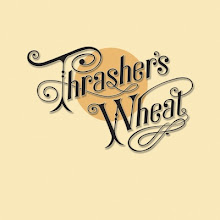
 *Thanks Neil!*
*Thanks Neil!*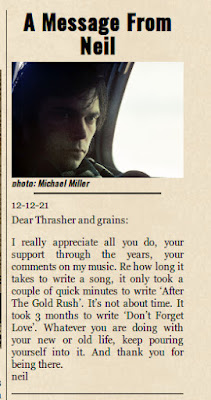




![[EFC Blue Ribbon - Free Speech Online]](http://www.thrasherswheat.org/gifs/free-speech.gif)











 The Unbearable Lightness of Being Neil Young
The Unbearable Lightness of Being Neil Young Pardon My Heart
Pardon My Heart



 "We're The Ones
"We're The Ones  Thanks for Supporting Thrasher's Wheat!
Thanks for Supporting Thrasher's Wheat!




 This blog
This blog 
 (... he didn't kill himself either...)
#AaronDidntKillHimself
(... he didn't kill himself either...)
#AaronDidntKillHimself

















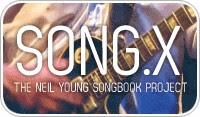





































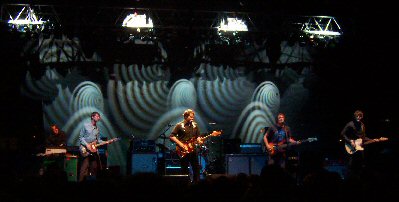

















 Neil Young's Moon Songs
Neil Young's Moon Songs




 Civic Duty Is Not Terrorism
Civic Duty Is Not Terrorism Orwell (and Grandpa) Was Right
Orwell (and Grandpa) Was Right


 What's So Funny About
What's So Funny About 


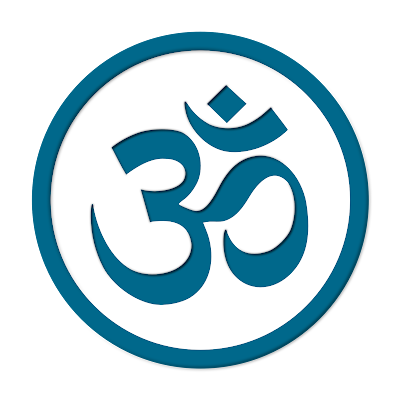
6 Comments:
YOH, the album, is underrated. Fantastic Barstool, Danger Bird, and Slip Away! I saw the film on DVD a couple years ago. I think my favorite aspect was the conversation with Scott Young. It adds perspective: the apple doesn’t fall too far and yet… NY is simultaneously a very different beast.
YOH doesn’t grab you by the throat like RG era Horse. It’s more like Toast. An IV line that gradually courses through your bloodstream. An infusion.
Dead Man is such a great film, I still like to watch it every 6 months or so. It's fantastic after putting down some shrooms or other kinds of mind enhancers.
YOTH is probably my favorite live release (official release, not archives or bootleg) of Neil's career. It really felt like a peak of some sort, as far as live Crazy Horse goes, though 2013 was a nice comeback. That version of Dangerbird on YOTH? Awesome.
This comment has been removed by the author.
This comment has been removed by the author.
Hi all,
I went to see the Dublin gig in 1996 at the Point. I was about 10 feet from the stage and great to see Crazy Horse for the first time. Little did I know that the interviews had been filmed backstage in what I believe was the kitchen/utility area, you can see a washing machine in the background. I only know this as my daughter Una was on the same stage a few day later and one of the staff there told her the Neil Young and Crazy Horse interviews had been held there.
I went to see The Year of the Horse film in Dublin in a tiny cinema at the Irish Film Institute and they very kindly turned the volume up! Looking forward to Toronto in May. Long may the Horse run. Keep up the good work Trasher and friends, I check you out everyday for Neil news. Busy year ahead for you with the tour. Still cherish my Thrashers Wheat badge from Hamburg in 2014!
David Fallon, Ireland.
@ Meta Rocker - YotH is definitely underrated.
Love what Jarmusch conveys here in interview. That contradictory contrast of the raw grainy lo fi Super-8 film with 40-track digital Dolby hi fidelity audio. That combo of high- tech sound and low-tech image.
So much joy in the theater. Especially when you know everyone at the screening!
See our exultation as we exit theater way back in 1997.
http://neilyoungnews.thrasherswheat.org/2020/03/neil-youngs-year-of-horse-streaming.html
scroll way down in the wheat bucket.
@ Richie - oh yeah. Dead Man, great film, great soundtrack.
For many the soundtrack exceeds the film, which is something truly remarkable.
Same experience as YotH above. Being among a handful of rusties in a dark theater. Those were the days ...
@ David howdy mate! long time. too long.
we definitely need to connect on the tour.
and we cherish our Hamburg memories, as swell. 2013, right?!
More cherishables to come in 24 on the rail w/ The Horse!
Post a Comment
<< Home